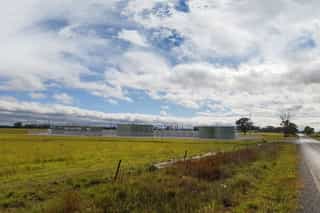
Beryl Battery Energy Storage System
A proposed sustainable energy storage system in Gulgong, NSW
Location: Gulgong, NSW
Status: Planning Approval
Network: Transgrid

100MW
Capacity
330
Average homes Powered per year
~ 40
jobs during peak constructionAbout the project
RATCH Australia Corporation (RAC) is proposing to develop a new battery energy storage system (BESS) in Gulgong, in the central west region of New South Wales.
The proposed Beryl BESS would be located within the Central-West Orana Renewable Energy Zone (CWO REZ), a 20,000 km² area connecting new renewable energy projects and electricity storage to deliver cheap, reliable, and clean electricity for homes and businesses in NSW. The CWO REZ is anticipated to unlock three gigawatts of new network capacity by the mid-2020s, enough to power 1.4 million Australian homes.
The Beryl BESS would have a capacity of up to 100 megawatts (MW) with two hours of storage (100MW / 200MWh). A direct 132kV connection via underground or overhead cabling would connect the proposed BESS to Transgrid’s Beryl Substation, located south of the project area, across from Beryl Road.
The Beryl BESS would support the Australian and New South Wales Government's commitment to increasing the use of clean, reliable energy to secure future energy supply across the country. It would also support RAC’s continued growth as a leading independent power producer in Australia, bringing clean and reliable energy to the market using innovative technologies.
Caring for our communities and the environment is a vital part of our vision. We will invite stakeholders and the community to provide feedback on the Beryl BESS at key stages of the planning process.


